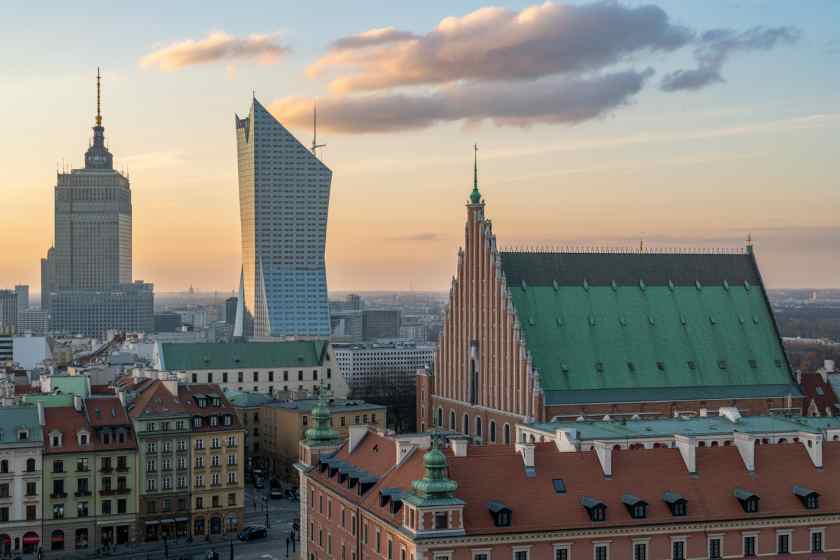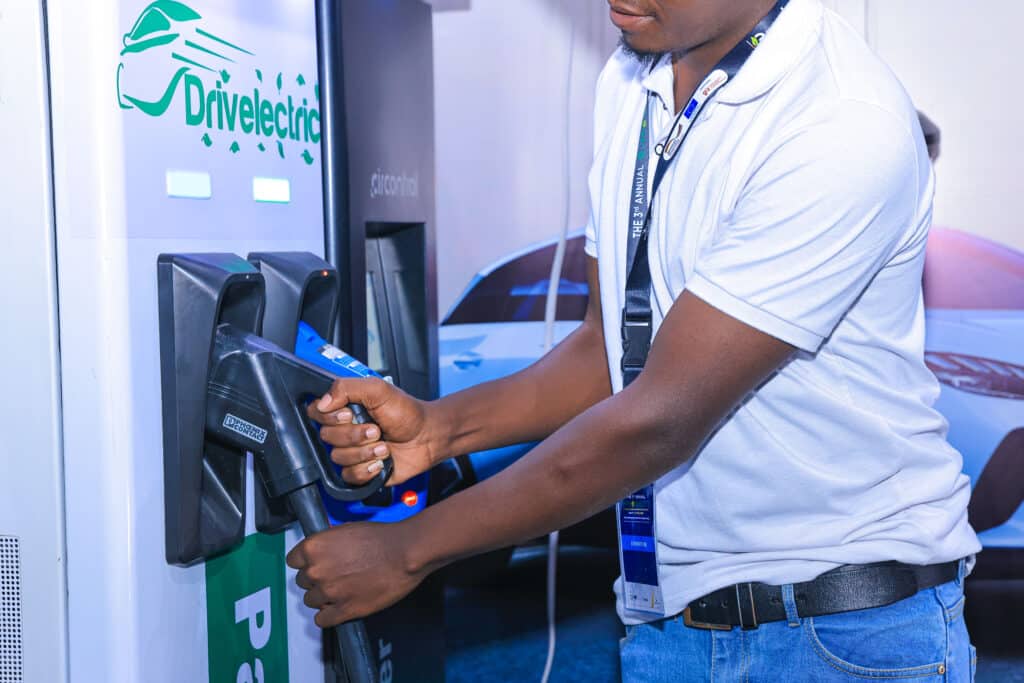Visit Warsaw Sustainably: New Buses Improve Access to City’s Attractions for Tourists – Travel And Tour World

Report on Warsaw’s Public Transport Modernization and Alignment with Sustainable Development Goals
Introduction: Strategic Fleet Enhancement for Sustainable Urban Mobility
The Warsaw public transport operator, Miejskie Zaklady Autobusowe (MZA), has contracted with Solaris for the delivery of fifty Urbino 18 articulated buses. This procurement represents a significant investment in modernizing the capital’s public transport infrastructure. The initiative is directly aligned with several United Nations Sustainable Development Goals (SDGs), primarily focusing on creating sustainable, resilient, and inclusive urban environments.
- SDG 11: Sustainable Cities and Communities – Improving access to safe, affordable, and sustainable transport systems.
- SDG 9: Industry, Innovation, and Infrastructure – Upgrading infrastructure to be more sustainable and resilient.
- SDG 13: Climate Action – Integrating climate change measures into city policies and planning.
Advancements in Public Transport and Contribution to SDG 11
Enhancing Capacity and Accessibility for Inclusive Transit
The addition of the Urbino 18 articulated buses is designed to increase the capacity and frequency of service on Warsaw’s high-demand routes. This directly addresses SDG 11, Target 11.2, which calls for providing access to sustainable transport systems for all, with special attention to the needs of those in vulnerable situations, including persons with disabilities and the elderly.
- Increased Passenger Capacity: The articulated design is ideal for high-volume routes, reducing overcrowding and improving journey comfort during peak hours.
- Universal Accessibility: The buses are equipped with features that ensure inclusivity.
- Low-floor design for easy boarding and alighting.
- Designated spaces for passengers with disabilities and families with strollers.
- Advanced safety systems, including Anti-lock Braking Systems (ABS) and Electronic Stability Control (ESC), to ensure passenger safety.
Reducing Environmental Impact for Healthier Cities
A key feature of the new fleet is its focus on environmental sustainability. The buses are equipped with advanced low-emission diesel engines that exceed current regulatory standards. This initiative contributes to SDG 11, Target 11.6, by aiming to reduce the adverse per capita environmental impact of cities, including by paying special attention to air quality. Furthermore, by reducing air pollution, the project supports SDG 3 (Good Health and Well-being).
Integration with Broader Sustainable Development Frameworks
Supporting Climate Action and Sustainable Infrastructure (SDG 13 & SDG 9)
MZA’s fleet renewal program is a component of Warsaw’s broader strategy for sustainable urban development. By investing in modern, energy-efficient vehicles, the city is taking concrete steps to reduce the carbon footprint of its transport sector, contributing to SDG 13 (Climate Action). This investment also exemplifies SDG 9 (Industry, Innovation, and Infrastructure) by developing quality, reliable, and sustainable infrastructure to support economic development and human well-being.
MZA’s long-term strategy includes:
- Continuous replacement of older vehicles with low- and zero-emission alternatives.
- Expansion of investments in electric buses.
- Integration of bus services with the city’s tram and train networks for a comprehensive, sustainable public transport system.
Fostering Sustainable Tourism and Economic Growth (SDG 8)
The enhancement of public transport infrastructure has a direct positive impact on Warsaw’s tourism industry. By providing efficient, accessible, and environmentally friendly transport options, the city improves the visitor experience and promotes sustainable tourism, which aligns with SDG 8 (Decent Work and Economic Growth), Target 8.9. Modern transport facilitates easy access for tourists to Warsaw’s key attractions, such as the Old Town, Łazienki Park, and Wilanów Palace, thereby supporting the local economy while minimizing traffic congestion and environmental impact.
Conclusion: A Model for Integrated Sustainable Development
The acquisition of fifty new Solaris Urbino 18 buses by Warsaw is a strategic initiative that extends beyond operational upgrades. It represents a clear commitment to the Sustainable Development Goals by enhancing urban mobility, improving air quality, promoting social inclusion, and supporting sustainable economic growth. This project positions Warsaw as a forward-thinking city that effectively balances the demands of urban life with a strong commitment to environmental and social responsibility, providing a sustainable and user-friendly transport system for both residents and tourists.
Analysis of Sustainable Development Goals in the Article
1. Which SDGs are addressed or connected to the issues highlighted in the article?
-
SDG 8: Decent Work and Economic Growth
- The article connects the improvement of public transport directly to enhancing tourism in Warsaw. By providing “efficient, economically, and eco-friendly means of transport,” the city aims to improve the experience for millions of visitors, which supports the local economy and promotes sustainable tourism.
-
SDG 9: Industry, Innovation, and Infrastructure
- The core of the article is about upgrading Warsaw’s public transport infrastructure. The purchase of 50 new, modern buses represents a significant investment in developing “quality, reliable, sustainable and resilient infrastructure.” The partnership with Solaris, a leading bus maker, also highlights innovation in the transport industry.
-
SDG 11: Sustainable Cities and Communities
- This is the most prominent SDG in the article. The initiative is aimed at making Warsaw’s urban mobility more sustainable. It addresses the need for accessible public transport for all, including people with disabilities and the elderly, and focuses on reducing the environmental impact of the city by lowering air pollution and carbon emissions.
-
SDG 13: Climate Action
- The article emphasizes the eco-friendly aspects of the new buses, which are equipped with “the latest low-emission diesel engines.” This directly contributes to climate action by helping the “city of Warsaw reduce air pollution and carbon emissions,” integrating climate change measures into the city’s urban development strategy.
2. What specific targets under those SDGs can be identified based on the article’s content?
-
Target 8.9: Promote sustainable tourism.
- The article explicitly states that the new buses will “increase Warsaw’s tourism” and support “Warsaw’s sustainable eco tourism goals.” The goal is to provide efficient and eco-friendly transport for international arrivals to access the city’s attractions, thereby promoting a sustainable tourism model.
-
Target 9.1: Develop quality, reliable, sustainable, and resilient infrastructure.
- The contract for 50 new Urbino 18 buses is a direct action to modernize and expand Warsaw’s transport infrastructure. The article describes this as part of “MZA’s strategy to modernize public transport in Warsaw” to serve its residents and millions of annual visitors.
-
Target 11.2: Provide access to safe, affordable, accessible, and sustainable transport systems for all.
- The article highlights features designed to improve accessibility, such as “low floors” that “facilitate easy boarding and alighting.” This ensures the buses “accommodate passengers with disabilities, elderly people, and families with small children,” directly addressing the need for accessible transport for vulnerable groups.
-
Target 11.6: Reduce the adverse per capita environmental impact of cities, including by paying special attention to air quality.
- The new buses are described as having an “emphasis on sustainability and eco-conscious technology.” They are equipped with “low-emission diesel engines” specifically to “reduce air pollution and carbon emissions,” which directly aligns with the goal of improving urban air quality.
3. Are there any indicators mentioned or implied in the article that can be used to measure progress towards the identified targets?
-
For Target 11.2 (Accessible Transport):
- An implied indicator is the proportion of the public transport fleet that is accessible. The article mentions the addition of 50 new buses with “low floors,” which increases the number of accessible vehicles in Warsaw’s fleet. The “frequency of service on key bus routes” is also mentioned as an improvement, which relates to the convenience and availability of public transport.
-
For Target 11.6 (Reduced Environmental Impact):
- A key indicator is the level of emissions from public transport. The article states the new buses use “advanced technologies that reduce emissions” and are equipped with “low-emission diesel engines.” Measuring the reduction in carbon emissions and air pollutants from the bus fleet would be a direct way to track progress.
-
For Target 9.1 (Infrastructure Development):
- An indicator is the passenger capacity and volume of the public transport system. The article notes that the new double-decker buses are designed to “accommodate more and more to passengers” and “increase the capacity” on high-volume routes, serving a population of “over 2 million people” and “several million more visitors.” The addition of 50 high-capacity buses is a measurable upgrade to the infrastructure.
-
For Target 8.9 (Sustainable Tourism):
- An implied indicator is the number of tourists utilizing public transport. The article suggests that the improved, user-friendly system will enhance the tourist experience and make it easier for them to “access main attractions.” An increase in public transport usage by tourists would indicate success in promoting sustainable mobility within the tourism sector.
4. Summary Table of SDGs, Targets, and Indicators
| SDGs | Targets | Indicators |
|---|---|---|
| SDG 11: Sustainable Cities and Communities | 11.2: Provide access to safe, affordable, accessible, and sustainable transport systems for all. | The number of new accessible buses with “low floors” added to the fleet; increased “frequency of service on key bus routes.” |
| SDG 11: Sustainable Cities and Communities | 11.6: Reduce the adverse per capita environmental impact of cities, paying special attention to air quality. | Reduction in “air pollution and carbon emissions” from the bus fleet due to “low-emission diesel engines.” |
| SDG 9: Industry, Innovation, and Infrastructure | 9.1: Develop quality, reliable, sustainable, and resilient infrastructure. | The addition of 50 modern, high-capacity buses to the public transport system; increased passenger capacity on high-volume routes. |
| SDG 8: Decent Work and Economic Growth | 8.9: Devise and implement policies to promote sustainable tourism. | Improved accessibility to tourist attractions via public transport; increased use of “eco-friendly means of transport” by tourists. |
| SDG 13: Climate Action | 13.2: Integrate climate change measures into national policies, strategies and planning. | Implementation of MZA’s strategy to modernize its fleet with “cutting-edge low-emission alternatives” as part of Warsaw’s sustainable urban development. |
Source: travelandtourworld.com
What is Your Reaction?
 Like
0
Like
0
 Dislike
0
Dislike
0
 Love
0
Love
0
 Funny
0
Funny
0
 Angry
0
Angry
0
 Sad
0
Sad
0
 Wow
0
Wow
0















































/environment-climate-change-and-health-(ech)/water-sanitation-hygiene-and-health-(wsh)/landfill-tuvalu-36092.tmb-1200v.jpg?sfvrsn=5c21fe40_1#)


.jpg.webp?itok=0ZsAnae9#)
























